One of the most common and ubiquitous antennas for amateur radio is the simple dipole antenna. And for good reason‚ dipole antennas are easy to build and are proven performers.
The ARRL antenna book says this about dipole antennas: The dipole is a fundamental form of antenna – in its most common form it is approximately one half wave length long at the frequency of use. The name comes from di- meaning two and -pole meaning part. That relates to the opposite voltages applied to each half of the antenna so that it has two electrical halves.
Dipoles can be used on just about any amateur radio band‚ but they are most common on the HF bands- that is on frequencies 30 Mhz and below. Wire dipoles are easy to construct as you only need a few parts- mostly just an appropriate length of wire‚ some insulators for the ends and a center connector. Most of these parts can be purchased from a variety of amateur radio suppliers both online or at a storefront.
I’m planning to build a linked dipole antenna but I didn’t have a suitable center connector so the first thing I did was search online. After seeing prices ranging from 25 – $45‚ I decided that I could do better myself; so I built this dipole antenna center connector for about $12 out of parts commonly available in your home improvement store. Of course you will need an SO-239 bulkhead connector. Now of course if you are like me‚ you can scavenge up most of the parts that were left over from previous projects. I did have some bulkhead connectors that I picked up from a hamfest years ago- but since hamfests are few and far between right now‚ you can also purchase them online.
So in this video I’m going to take you through the steps of building your own dipole antenna center connector. Once you have all the parts and tools collected‚ you should be able to put this together in about 30 minutes.
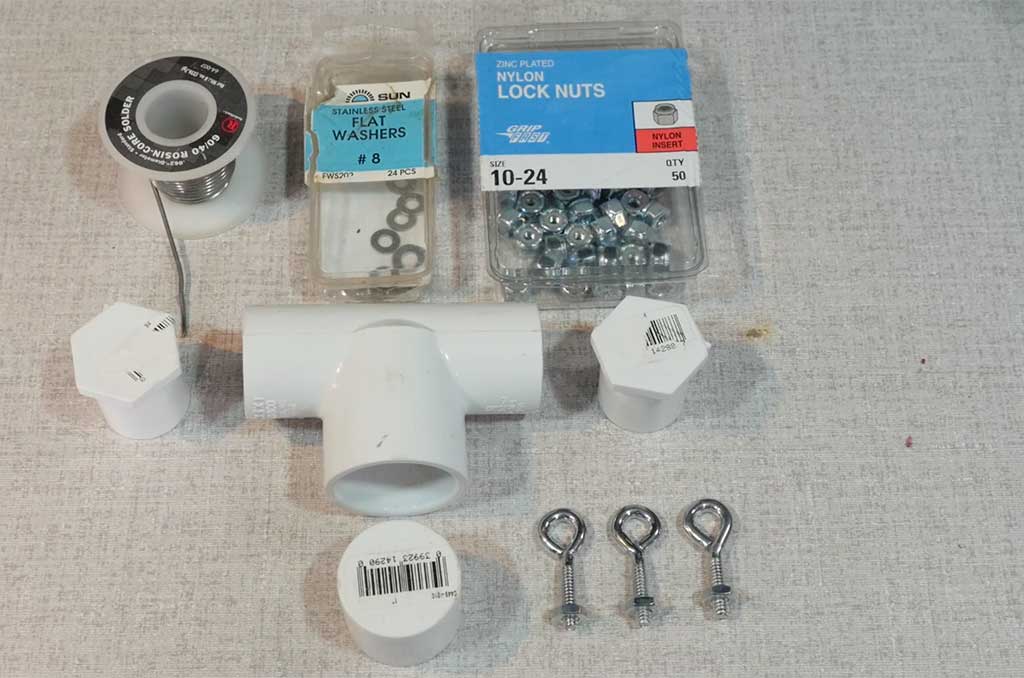
For parts you’ll need:
1 – ¾ x ¾ x 1 inch PVC Tee connector
2 – ¾ inch PVC plugs
1 – 1 inch PVC plug
3 – 3/16 x 1 ½ inch eye bolts
3 – Number 10 washers
3 – 10 x 24 nylon lock nuts
SO-239 bulkhead connector
Rosin core solder and flux
You’ll also need a couple lengths of 14 gauge insulated stranded wire and some PVC adhesive. I’ll put a full list of the parts necessary in the video description below.
As for tools‚ you’ll need:
Wire cutter and stripper
Power drill
5×32 inch drill bit
5×8 inch spade bit
Vice grips or other locking wrench
Needle Nose Pliers
Small file
High power soldering gun or iron
You will need to solder the 14 gauge wires to the bulkhead connector- a 30 watt pencil tip iron will probably not generate enough heat to do this so I recommend either a 100 watt soldering gun or a butane iron with a wide tip.
Starting out‚ you will need to drill a few holes into the caps and the tee connector. Into the two ¾ inch plugs drill a 5×32 inch hole in the center. You will then move the nut that came with the eye hook all the way to the end of the thread and then thread the eye hook through the hole. It will be a tight fit so work it in. Do this with both ¾ inch plugs.
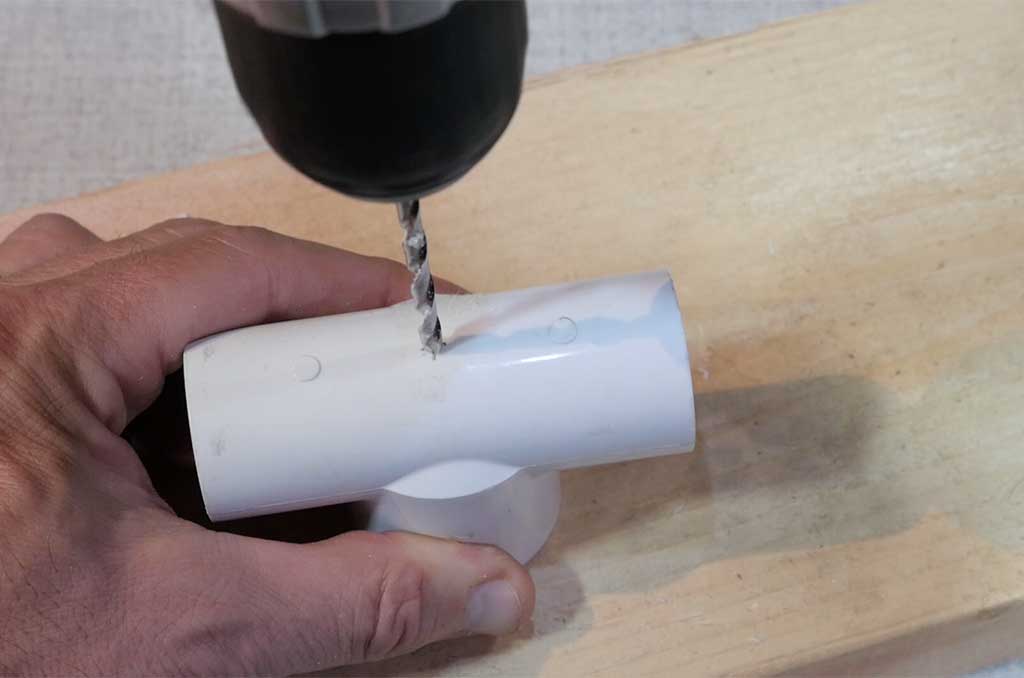
With the tee connector you will need to drill three 5/32 inch holes. One on the top of the connector and two under side in the elbow portion of the Tee. I drilled these bottom holes at an angle as this is where your wire from the connector will come out. Thread the third eye hook on the top of the tee just like you did with the plugs.
Moving on to the 1 inch plug. You will need to drill a ⅝ inch hole into this plug. I used a spade bit to do that‚ but first drill a pilot hole so you know you will be centered on the plug. Safety first- PVC is a soft material so take it easy drilling the hole with the spade bit. I used my vise grips to securely hold the plug while drilling. Test the bulkhead connector to make sure it fits. If it doesn’t you can sand out the hole a bit to make it bigger.
Now we move on to the final assembly. On the back side of the eye bolts‚ place a washer and a locking nut. Tighten the nut with the needle nose pliers.
Next cut two lengths of 14 gauge wire. Don’t worry about making them too long- you can trim them later. Make each length about 18 inches long. Next tie a knot into the wire at about the 4 inch mark. This will prevent the wire from being pulled out after the connector is fully assembled. Next‚ go up through the 1 inch hole on the tee and thread the wire through the drilled hole.
Now you are ready to solder the wires to the connector. First strip about ¼ inch of insulation off the wires and tin them with solder. Next Use the small file to rough up the chrome finish on the SO-239. Then solder one of the wires to the center connector. Now to make the process a little easier‚ I’ll dab a bit of flux on the bulkhead connector and place a small pad of solder. Once that solder has adhered to the connector you can go ahead and solder the second wire.
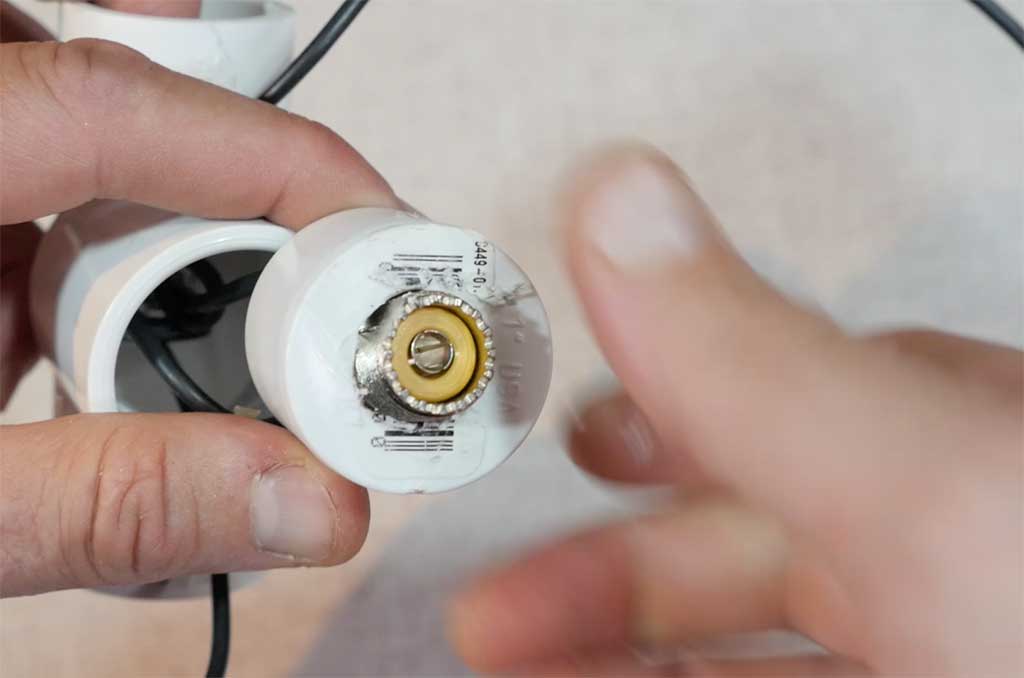
Once that is complete‚ let things cool a bit as the connector will be hot. Then you can push the bulkhead connector through the hole add the lock washer and jamb nut and tighten things down. If everything looks good- use the PVC adhesive to seal it up and make your handiwork permanent.
Now a couple of things to note. First off the plugs will not go in all the way- there will be a slight gap. This is due to the wire and the knot inside the Tee. The second thing is that there is a slight gap there the wires exit the tee. You can dab a bit of silicone in there if you want to make them water tight.
Third and most importantly‚ this is just a center connector- it is not a 1:1 balun. One to one baluns are good for eliminating common mode current but aren’t a necessary feature of a dipole antenna. You can use a dipole antenna without a 1:1 balun and it will work just fine. But if common mode currents are a concern to you‚ you can add some ferrite beads to your feedline or make a choke out of a few loops of coax.
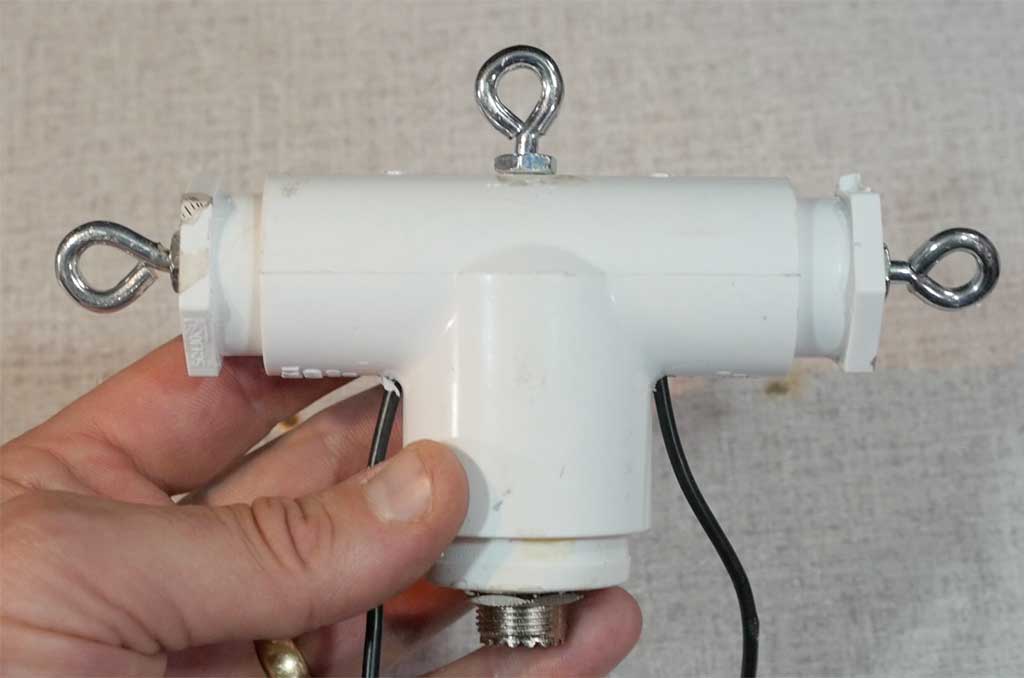
Like I mentioned earlier in the video‚ this center connector will be part of a linked dipole antenna project I’m working on. You’ll see that antenna in a future video.
So there you go. Do you have any questions or comments on the dipole antenna center connector project? Please leave them in the comments below, I’d love to hear what I missed so please share your advice too.
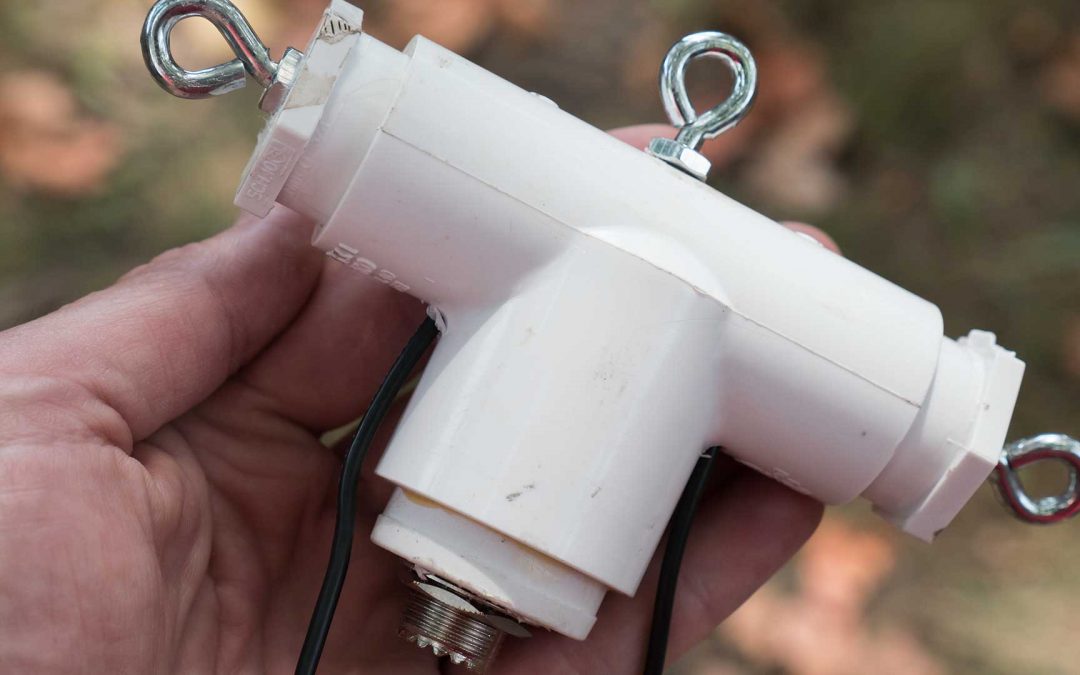
Recent Comments